Key Takeaways
- Clarity first — Define your goals and your Ideal Customer Avatar before diving into tactics.
- Build a solid foundation — Your website, content, and social media presence are the essential components of online marketing for small business.
- Balance inbound and outbound marketing — Outbound delivers quick wins; inbound builds sustainable, long-term growth. The key is using them both together intelligently.
- Structure reduces chaos — Assess your position, understand your competition, create tailored marketing mixes, and prioritize limited resources.
- Measure and refine — Track metrics that matter—website conversions, social engagement quality, and ad ROI—and use them to improve.
- Avoid common pitfalls — Don’t spread yourself too thin, ignore feedback, or fail to adapt. Continuous refinement keeps strategies effective.
Introduction
For many small business owners, digital marketing for small business feels less like an opportunity and more like a source of anxiety. Flashy new tools, competing opinions, and endless “must-try” tactics create a flood of information. It’s not easy to discern what information is legitimate in such a noisy environment.
That confusion only intensifies under the pressure to keep customers coming through the door. It’s tempting to try a little bit of everything—ads, social posts, email blasts—only to end up with scattered efforts, drained budgets, and minimal results.
It doesn’t have to be this way. With critical thinking and a structured plan, you can bring clarity to the chaos, take back control, and generate results that make sense for your business. At Scorpion Five Technologies, we’ve seen how breaking digital marketing into manageable parts—aligned with clear goals and customer needs—allows businesses to strategically create a system for growth.
In short, most of the stress comes from not knowing, and the chaos that ensues from uninformed decision making. What activities should I engage in and fund? How much should I spend? What will we really get out of it? When you create a path to understanding and orderliness, however, you begin to remove the source all the friction and digital marketing simply becomes a normal, strategic business function.
Clarify Your Goals Before you Start
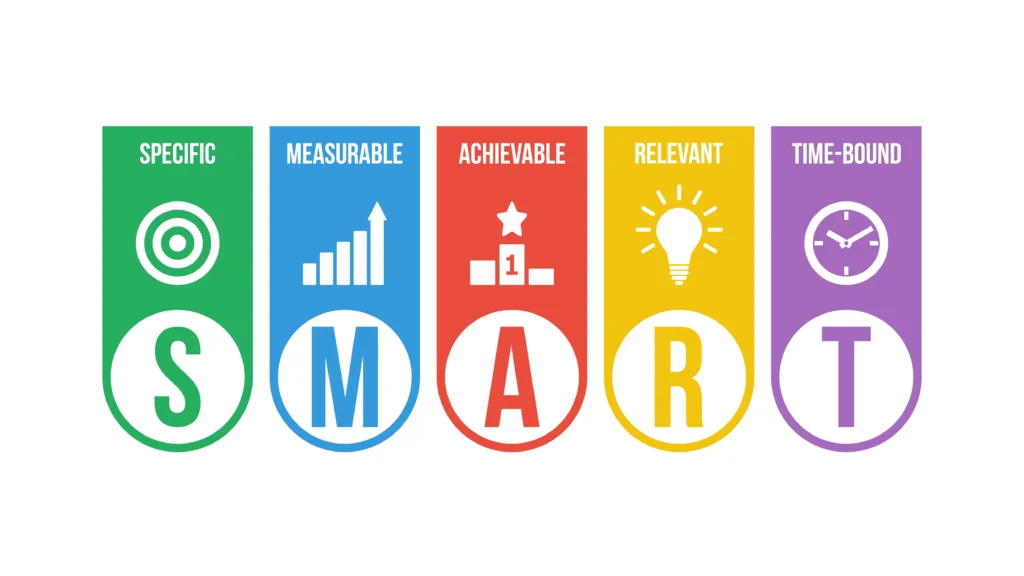
Before researching advertising tactics or chasing the latest trends in social media content, pause and ask yourself: what was the original goal that made you start exploring online marketing in the first place? Too often, that purpose gets buried under noise as exploring the subject becomes more and more overwhelming.
Your goals should be specific and measurable—whether that’s booking five new consultations a week, generating a set number of qualified leads per month, or increasing repeat sales. Equally important is knowing who your customer is and why they should choose you over competitors. If you can’t articulate those answers, it’s worth spending a bit more time in the thinking chair. Trial-and-error marketing is a rather expensive undertaking that doesn’t produce much in the way of results.
S5T’s approach to digital marketing for small business focuses on aligning tactics with clear objectives and customer needs—so every action is trackable, testable, and tied to outcomes.
Know the Key Components of an Online Presence

To make any form of online marketing for small business work, you need to first establish a solid digital foundation. Without these basics in place, conducting high impact marketing efforts will be a lot more challenging, less effective and more expensive.
- Website — Your website is your digital headquarters and often the first impression a prospective customer gets of your business. It should be clear, modern, and designed to convert visitors into clients, purchasers, or followers of some kind. If your site isn’t pulling its weight, S5T’s web development services focus on creating fast, responsive sites built to generate leads.
- Content — Educational resources, blogs, FAQs, and how-to guides not only build trust but also attract search traffic. High-value content turns your site from a brochure into a resource customers return to.
- Social Media — Platforms like LinkedIn, Facebook, or TikTok give you the chance to meet customers where they already spend time. This works in compliment to finding customers as they are actively searching for you, as described in the “content” case above.
Breaking online marketing into these components helps you begin to understand the domain. You don’t need to learn about or analyze everything all at once—you can focus on one piece at a time. For example, ask yourself, does our website clearly speak to our ideal customer? Or, which social platforms are most likely to connect with them? This step-by-step approach makes digital marketing more manageable and far more effective.
Understand Why Online Marketing Feels Overwhelming

Let’s take a moment to appreciate that terms like “online marketing” and “digital marketing” are incredibly broad. It’s no wonder so many small business owners feel lost and reach out to S5T for help with digital marketing.
The marketplace is chock full of products, platforms, opinions, promises and snake oil salesmen promising “one weird trick” to make all your online marketing dreams come true. Sorting through all this while running your business can be frustrating to say the least.
What makes things harder is the lack of clear timelines. Should you expect results in days, weeks, or months? Which marketing channels deserve priority right now? With every digital marketing tool and platform carrying a price tag, small businesses can’t afford to guess. You have results you need to achieve to survive and grow, but you also must be able to reckon when the returns will materialize and how much they’ll cost.
The good news is that you can lift the fog and ease the frustration by breaking the subject of online marketing for your small business into distinct areas of focus. With structure you can finally achieve clarity and understanding. That understanding will allow you to create a viable digital marketing plan.
Online Marketing in Two Worlds: Inbound vs. Outbound
As we mentioned earlier, splitting your online presence into key components is one way you can begin to dissect the digital marketing domain. We can now break things down even further by splitting online marketing for small business into two worlds: inbound marketing and outbound marketing. Every tactic you’ll encounter ultimately falls into one of these categories, and could be applied to any of the key components of your online presence.
Inbound marketing is the patient online presence builder, generating steady momentum over time while also requiring steady effort. Outbound marketing is the quick starter, producing immediate results but requiring constant fuel and bursts of effort when setting up and refining campaigns. Neither is inherently better—the key is knowing when and how to use each.
Outbound Marketing: Fast Gains but Fleeting Results
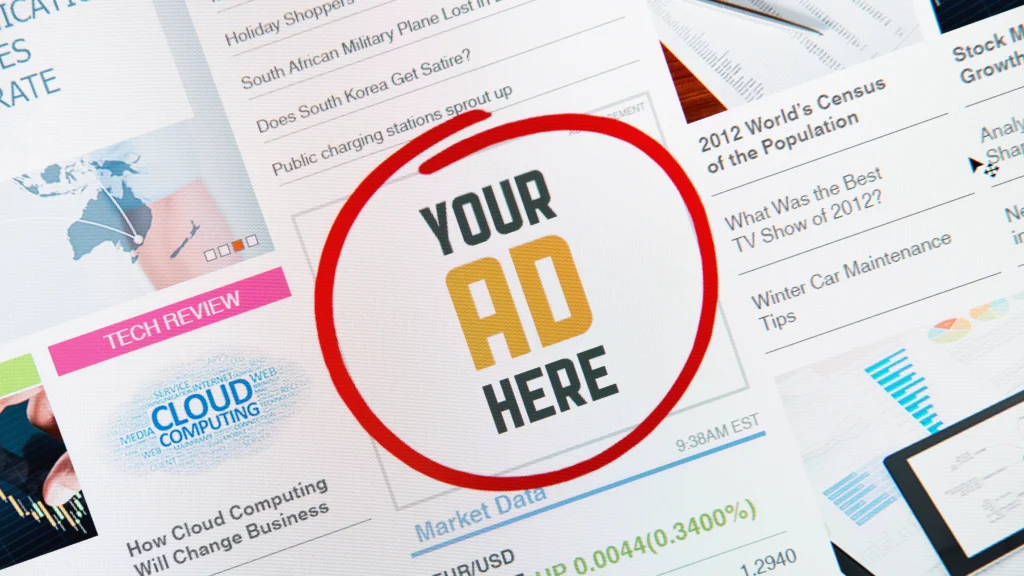
Outbound marketing is about displaying your brand directly in front of consumers at a time they are receptive. Think paid ads, sponsored social posts, cold outreach, and similar tactics. Done right, these efforts can bring in leads almost immediately—a valuable option when you need fast traction.
But as with all things, there is a tradeoff. Outbound campaigns demand continuous spending and refinement. Turn off the ad budget or pause your outreach, and the results disappear just as quickly as they appeared. Small businesses sometimes rely too heavily on outbound marketing and find themselves on a treadmill: needing more sales to cover ad costs, but needing more ad spend to generate sales.
That doesn’t mean outbound marketing should be avoided. In fact, it’s often the right move for launches, promotions, or seasonal pushes. The key is to treat outbound as one part of a balanced strategy—an accelerator you can dial up when needed, not the sole engine of your growth.
Should you require guidance on when outbound marketing is the right choice, S5T can help. We specialize in helping small business create and manage holistic digital marketing plans that balance inbound and outbound efforts to help keep you off the ad spend wheel.
Inbound Marketing: The Slow-Build Engine That Keeps Paying Off

Inbound marketing is about creating value that draws customers to you, rather than you placing your brand in their path as you would with outbound marketing. To do this, you create resources—blogs, how-to guides, videos, newsletters, and so on—that help people when they’re actively searching for answers. The idea is that you become a recognized authority on a subject, and people seek you out for answers and insight.
Unlike outbound, inbound marketing doesn’t disappear when you pause spending. A well-written article can rank in search engines for years, steadily bringing in leads at no additional cost. But consistency is key. You must:
- Publishing high-quality content that engages audiences.
- Send all the right signals to search engines, content platforms (like YouTube) and social media platforms to indicate that you are a source of quality content, enticing them to send their users your way—e.g., Search Engine Optimization (SEO) accomplishes this for Google, Bing, and so-on.
That said, inbound is a long, steady grind. It can take months of effort before results materialize, which is why it works best as the stabilizing counterpart to outbound marketing. Outbound marketing can give you a surge when you need it; inbound builds the steady foundation that keeps your pipeline alive long after the ads stop.
For small businesses, the ideal strategy is rarely one or the other. The real strength comes from balancing outbound’s immediacy with inbound’s staying power—a balance that S5T loves helping our small business clients achieve. Outbound allows you to surge and focus on specific initiatives or business areas on the timeline of your choosing. Conversely, inbound marketing provides a steady stream of traffic to sustain areas of the business that are not currently the focus of outbound campaigns.
Quieting the Chaos: Building a Balanced, Strategic Gameplan

With a clear understanding of inbound and outbound marketing, the next step is to fit them into a plan that works for your business. This is where many small business owners struggle—not because they lack ideas, but because they lack structure.
A strong digital marketing strategy doesn’t try to do everything at once. Instead, it focuses on the essentials: understanding your current position, analyzing your competition, building the right marketing mix, and prioritizing where to put time and money. When these elements come together, the result is a balanced plan that feels less chaotic and delivers measurable outcomes.
In the following sections, we’ll walk through each of these steps so you can start building a strategy that reduces noise, sharpens focus, and sets your business on a sustainable path.
Assessing Your Current Position: What’s in Place, What’s Missing?

Before you can build a balanced marketing plan, you need to know where you stand today. Take inventory of your digital foundation: is your website clear and conversion-focused, are you publishing content, and do you have an active presence on the social platforms that matter to your customers?
From there, examine your existing marketing efforts. Which inbound activities (such as SEO or content) are already underway, and which outbound campaigns (like ads or email outreach) are driving results? Just as importantly, where are you over-relying on a single marketing approach—e.g., only running Google search ads, or only posting on social media—and where are you under-invested?
This kind of honest assessment is the first step toward clarity. By recognizing gaps and strengths in your current setup, you create a roadmap for what to build, refine, or retire. If you’re unsure how to evaluate these areas, S5T’s digital marketing services can provide a structured review and help you identify the pieces that matter most.
Understand Your Competition

Digital marketing doesn’t happen in a vacuum—your competitors are working just as hard as you to capture attention. Someone will always be trying to outbid your ads, outrank your content, or grab your audience’s focus on social platforms. That reality makes competitor awareness an essential part of your strategy.
Start by analyzing who shows up in search results for the keywords you care about and which companies are running ads in your space. Look at how they present themselves on social media, the kind of content they publish, and the calls to action they use. The idea isn’t to copy them. Instead you are gaining perspective on what customers are seeing and seemingly reacting favorably to. With that situational awareness, you can identify their gaps and find places where your business can stand out.
Competition also evolves, so your analysis can’t be a one-time exercise. Build it into a cycle: review performance, watch how rivals shift their tactics, and adapt your own campaigns accordingly. At Scorpion Five Technologies, we emphasize this kind of continuous refinement, ensuring your business stays relevant, competitive, and ahead of shifting trends.
Create a Marketing Mix
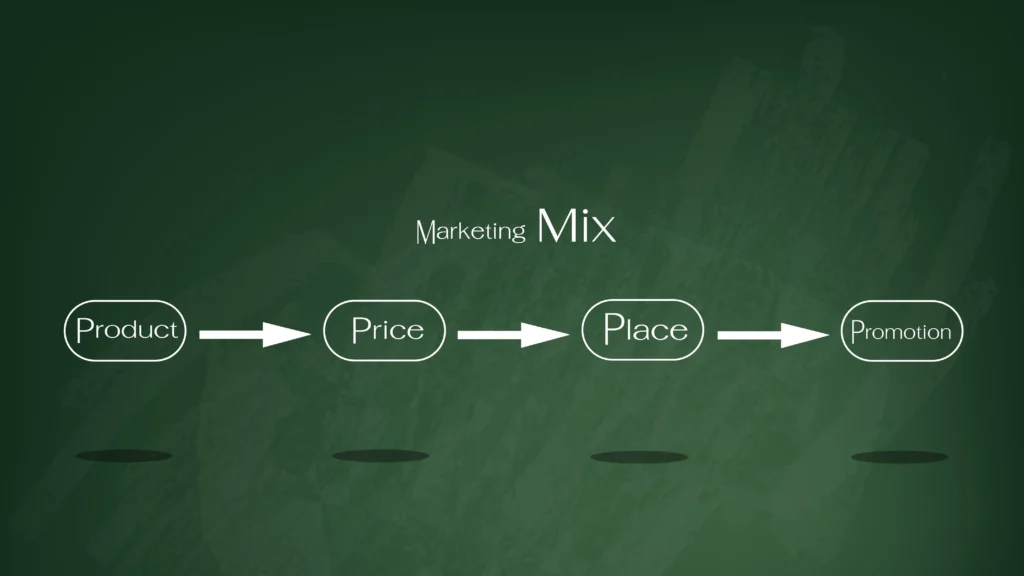
With clear goals and an understanding of your competition, it’s time to design a marketing mix. Defining the marketing mix provides a structured way to align your tactics with your Ideal Customer Avatar (ICA). ICA being a marketing-specific term that describes your exact customer. The exercise of defining an ICA can go very deep, considering everything from age range, to political affiliation, to specific employment positions. Additionally, one company, or even a single product, may have more than one ICA.
Defining an ICA helps you to better-understand who your customer is and why they should chose you. Without well-defined ICAs, your marketing mix risks being too generic to resonate.
The marketing mix is built on the classic Four Ps of Marketing:
- Product — What exactly are you offering, and how does it meet your customer’s needs?
- Price — How should you price it relative to the value delivered and the expectations of your target market?
- Place — Where will customers encounter your product or service—online, in person, through partners, or across multiple channels?
- Promotion — What inbound or outbound methods will you use to communicate value and generate interest?
To shape these decisions, it helps to apply the Three Rs: Right Person, Right Time, Right Message. This framework ensures your marketing mix isn’t just comprehensive but also customer-centered. Are you reaching the right person? Are you showing up at the right time in their journey? And are you delivering a message that truly connects?
By leveraging the Four Ps with the Three Rs as you create marketing mixes tailored to each ICA, you greatly increase the chances of favorable marketing ROI.
Prioritize your Efforts
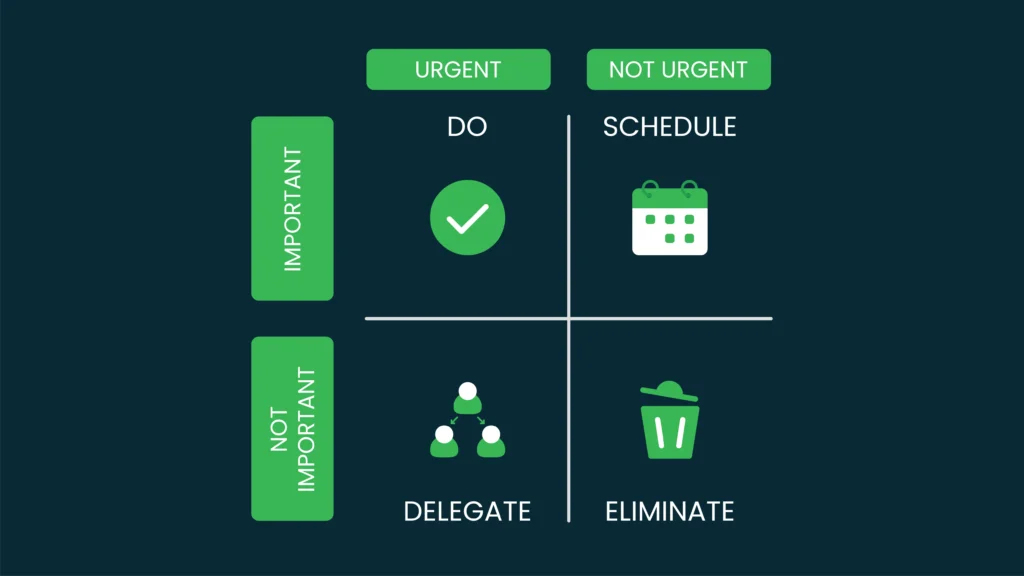
Even with clear goals, an ICA, and a marketing mix, most small businesses face a hard truth: limited budgets and limited time. You can’t do everything at once, so prioritization becomes essential.
Start by reviewing your research. Which inbound or outbound channels are most likely to reach your ICA effectively? Which components of your online presence—website, content, social media—need the most immediate attention? Focusing resources on the areas with the highest potential impact prevents waste and builds momentum.
It also helps to treat inbound and outbound differently in your budget. Inbound marketing—like SEO and content—benefits from steady, consistent investment that compounds over time. Think of more like a recurring, monthly bill or fixed cost. Outbound marketing, by contrast, should ebb and flow with circumstance. For example, a toy maker might increase ad spend leading up to the holidays and scale back in the spring.
Most importantly, don’t anchor ad budgets to arbitrary monthly amounts. Instead, use your ICA and marketing mix to calculate what it will cost to reach the right person with the right message at the right time. Digital ad platforms provide tools to model impressions, clicks, and conversions—use them to tie your spend directly to revenue goals. If you need help installing and configuring analytics tools and dashboards, S5T can help.
By prioritizing efforts in this way, you avoid spreading resources too thin, ensure every dollar has a purpose, and create a marketing strategy that grows alongside your business.
Measuring What Matters: Collecting Metrics
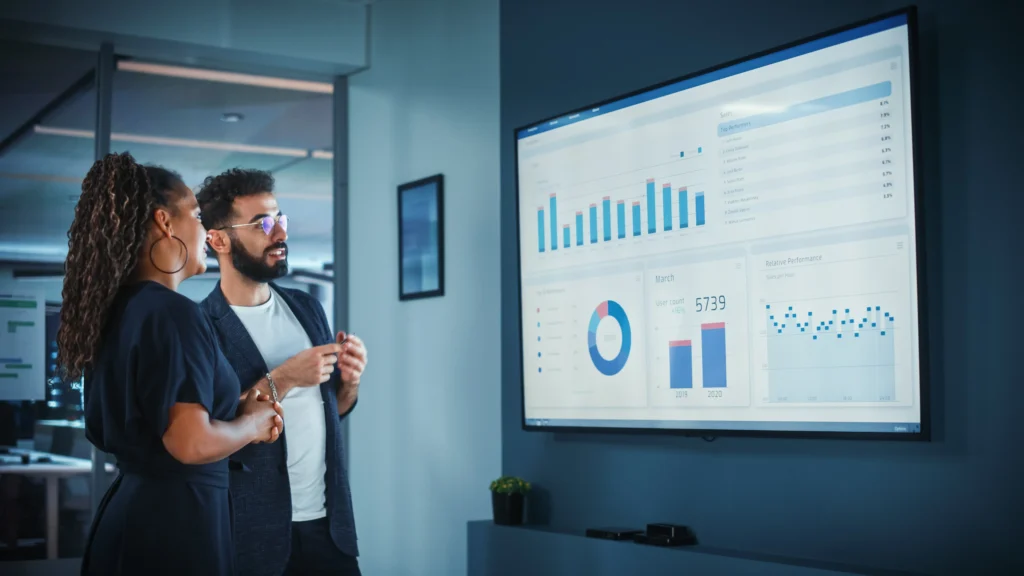
Marketing isn’t cheap—whether in time or money—and without the right measurement in place, even well-designed strategies can underperform. To achieve real ROI, you need to track the numbers that indicate performance and reflect progress, and then use them to drive constant refinement.
A few areas to focus on:
- Website analytics — Track visits, sources of traffic, and conversions. It’s not enough to know how many people landed on your site; you need to know which channels brought them there and whether they took meaningful actions.
- Social engagement — Likes, shares, and comments provide a surface-level view of attention, but the real question is what those interactions mean for your business. Are they driving awareness, inquiries, or sales?
- Paid ad ROI — Always measure cost per lead or cost per customer. These figures show whether your ad spend is sustainable and highlight where refinements are needed.
Refinement should be an ongoing process. Intuition plays a role, but whenever data is available, let it guide decisions and inform intuitions. Metrics make the difference between guessing at what might work and steadily improving campaigns over time.
At Scorpion Five Technologies, we help small businesses set up the right dashboards and tracking tools so they can see not only what’s happening, but why. With the right metrics in place, every decision becomes clearer, every dollar works harder, and your marketing strategy stays accountable.
Avoiding Common Pitfalls: What to Watch Out For

Even the most carefully designed marketing strategies can go off track if you fall into common traps. Small businesses in particular often face pressure to do too much with too little, which makes avoiding missteps even more critical.
Some of the most common pitfalls include:
- Overcommitting to too many channels or tools — Spreading efforts across every platform dilutes impact. Focus on the ones that matter most to your ICA.
- Neglecting customer feedback and reviews — Reviews are a free checklist for improvement, even if they sting a little from time to time. Ignoring them means missing out on insights that can boost trust and performance; this is true of both good and bad reviews.
- Failing to follow up on leads promptly — A slow response can mean losing a prospect to a competitor who acted faster.
- Skipping continuous learning and adaptation — Digital marketing changes quickly. What worked a year ago may not work today, so commit to ongoing refinement.
Avoiding these pitfalls helps make sure your efforts stay efficient, sustainable, and aligned with your goals. With the right focus and steady refinement, your marketing becomes an asset rather than a burden.
Conclusion
Online marketing for small business doesn’t have to feel overwhelming. By breaking the subject into manageable parts—clarifying your goals, building a strong online presence, understanding inbound and outbound strategies, and crafting a balanced game plan—you can replace chaos with clarity.
The key is to keep your approach calm and stepwise: assess where you are, set realistic goals, track the right metrics, and refine as you go. Avoid the common pitfalls that drain resources, and focus instead on what drives measurable outcomes.
Finally, remember that marketing is never “done.” Regular review and adjustment is what keeps your strategy effective as customer behavior and digital platforms evolve. If you want to dig deeper, trusted resources like industry associations, reputable marketing blogs, or experienced partners like Scorpion Five Technologies can provide guidance to keep you on track.
By approaching digital marketing with structure and purpose, you’ll not only quiet the chaos—you’ll create a system that delivers growth, resilience, and peace of mind.
Further Reading & Resources
- Small Business Technology: 5 Powerful Focus Areas to Know — Explore the foundational tech investments that give small businesses a competitive edge—including web development, digital marketing, cloud, custom software, and process automation.
- S5T’s Blog — Continue building on what you’ve learned here: inbound vs. outbound, creating marketing mixes, measuring ROI.
- Industry Associations & Reputable Blogs — Sites like the Digital Marketing Institute, HubSpot, or Content Marketing Institute offer up-to-date best practices, case studies, and trend insights.
FAQs
Q: What is the difference between inbound and outbound marketing?
A: Inbound marketing attracts customers by providing valuable content they search for, while outbound marketing places your brand directly in front of customers through ads, outreach, and promotions. Both are essential when balanced properly.
Q: How long does it take to see results from online marketing for small business?
A: Outbound tactics can produce results immediately, while inbound efforts typically take months of consistent work to pay off. A balanced approach helps you achieve both quick wins and long-term growth.
Q: What should I prioritize if I have a limited marketing budget?
A: Focus first on strengthening your website, defining your ICA, and setting up analytics. Then dedicate steady investment to inbound (like SEO and content), while using outbound selectively for promotions or launches.
Q: How do I know if my online marketing is working?
A: Look beyond vanity metrics like likes and impressions. Track cost per lead, cost per customer, website conversions, and whether engagement actually leads to inquiries or sales.
Q: Can S5T help me manage both inbound and outbound marketing?
A: Yes. Scorpion Five Technologies specializes in building holistic marketing strategies that align with your business goals and keep you off the “ad spend treadmill.”


